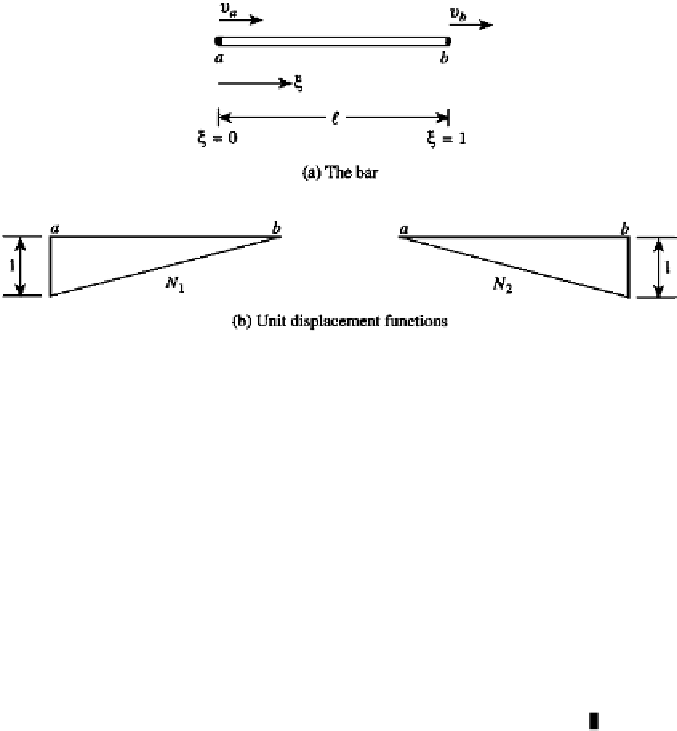Information Technology Reference
In-Depth Information
FIGURE 6.25
A two-node system.
or
v
10
11
u
1
=
N
u
a
=
u
(3)
v
u
2
b
From (1),
]
10
−
v
a
v
b
]
v
a
v
b
u
=
[1
ξ
=
[
(
1
−
ξ) ξ
=
[
N
1
N
2
]
v
=
N
(ξ )
v
11
(4)
N
−
1
u
The unit displacement functions
N
1
and
N
2
are sketched in Fig. 6.25b.
Complete Polynomials
The
order
(or
degree
)
m
of a polynomial is the highest power to which the variables are raised.
For example, if the “final” term of a two-dimensional polynomial series is
5
4
, the order
ξ
η
is 5
9. A polynomial is said to be
complete
to a given order if it contains all terms of
that order and below. The row matrix
N
u
of Eq. (6.57) contains the terms for a polynomial
that is complete to a certain degree, say
m
. The number of terms
n
present in a complete
two-dimensional polynomial of degree
m
is
+
4
=
1
2
(
n
=
m
+
1
)(
m
+
2
)
(6.61)
Sometimes it is convenient to use the
Pascal
4
triangle
to assist in assuring that some terms
are not overlooked. The diagonal lines identify complete polynomials.
4
Blaise Pascal (1623-1662) was a French mathematician, with an interest in physics and epistemology. His scientific
interest was aroused at about the age of 13 when he read Euclid's
Elements
. At 16 he made his first recognized
contribution now known as Pascal's “mystic-hexagram.” By 1645 he completed the design and development
of a calculation machine, which was originally intended to assist his father, an accountant, with addition and
subtraction. Pascal oversaw the manufacture and marketing of his machine. When he was in his early 30s, for two
years he abandoned his scientific pursuits in favor of religious activities.










Search WWH ::

Custom Search